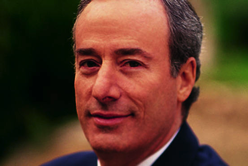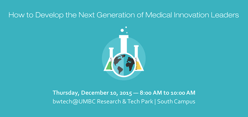
Alexandria Real Estate Equities’ vision to turn a mostly undeveloped property in Research Triangle Park into its latest life science cluster is moving forward with a first phase intended to boost offerings for early-stage startups.
Pasadena, CA-based Alexandria (NYSE: ARE), which operates science and technology campuses across the country, announced the RTP plans today. Alexandria will start by refurbishing an existing building and laying the groundwork for development expected to reach 1 million square feet of space. Those RTP plans put the property shy of similar Alexandria science campuses in San Francisco; Cambridge, MA, and New York. But Alexandria CEO Joel Marcus says each site reflects its market.

The Food and Drug Administration late Monday broadened the use of an already available anthrax drug from Emergent Biosolutions Inc. EBS, -0.57% to a larger treatment population. The agency approved Emergent's BioThrax for use in people 18 to 65 years old who have had suspected or confirmed exposure to anthrax. Previously, the indication for the drug was for people who were at a high risk of exposure to the bacteria. Emergent Biosolutions shares rose 1% to $38.10 after hours.

The Maryland Technology Development Corp. (TEDCO) is bringing in an industry veteran to turn its $106 million Maryland Venture Fund into a regional leader in venture funding.
Andy Jones, an entrepreneur and venture capitalist, joined TEDCO on Monday as managing director of the Maryland Venture Fund. Jones’ prime task will be to elevate the fund from a supporting investor to a leader in venture capital that drives more money to local companies.

A collaboration between the University of Cambridge and MedImmune, the global biologics research and development arm of AstraZeneca, has led researchers to identify a potentially significant new application for a well-known human enzyme, which may have implications for treating respiratory diseases such as asthma.
Enzymes are biological catalysts – molecules that speed up chemical reactions within living materials. Many enzymes are already well characterized and their functions fairly well understood. For example, the enzyme known as MMP8 is present in the connective tissue of most mammals, where it breaks the chemical bonds found in collagen.

Construction is complete on a new 700-spot parking garage at Universities at Shady Grove, clearing the way to begin moving dirt on a planned $162 million biomedical sciences building on its Rockville campus.
Work will start on that facility in June, said Stewart Edelstein, associate vice chancellor of the University System of Maryland, the state's public university network that includes USG. The full project, which included the $20 million garage and a new entrance onto campus, will be completed by fall 2018, said Edelstein, who is also USG's executive director.

DATE: Wednesday, December 9, 2015LOCATION: Montgomery County Department of Economic Development, 111 Rockville Pike, Suite 800, Rockville, MD 20850
The FDA Technology Transfer program seeks to advance the development and commercialization of inventions that result from regulatory science research and development conducted at the FDA. Regulatory Science can be defined as the science of developing new tools and technologies to assess the safety, efficacy, quality, and performance of FDA-regulated products. Technology Transfer tools used by the FDA Technology Transfer Program are the same tools used by Federal Agencies and FDA technology transfer-related policies are similar to the policies of the NIH and CDC. However, the range of technologies developed at the FDA is more diverse- a reflection of the FDA’s role in ensuring the safety of food, drugs, biologics, medical devices, tobacco, and veterinary medicines.

Join Us on Dec 2nd for BioBuzz MoCo
We are excited to be returning to Growlers in Gaithersburg on December 2nd for BioBuzz MoCo
BioBuzz is an ongoing monthly networking group of professionals from all sectors of the Bioscience industry. Each month we host a FREE event for like-minded people to come to gether and network, reconnect with past coworkers, build stonger relationships and share stimulating conversations in a welcoming atmosphere.

Thursday, December 10, 2015 from 8:00 AM to 10:00 AM, bwtech@UMBC
Senator Mikulski is retiring.
Governor Hogan is just getting started.
Who’s the next champion of Maryland’s life sciences sector?
Please join We Work For Health (WWFH) Maryland and the University of Maryland Baltimore County (UMBC) as we explore how to develop Maryland’s next generation of elected leaders to foster medical innovation and grow our regional bio-economy.
Over breakfast, members of the biotechnology and pharmaceutical industry, government, labor, and academic community will discuss the importance of identifying and cultivating medical innovation leaders to help address our challenges and make the most of our

Thursday, December 10, 2015 | 6:30pm-8:30pm, Johns Hopkins East, 1101 East 33rd Street, Baltimore, Maryland 21218 | 3rd Floor Conference
Learn how to secure National Institutes of Health SBIR/STTRs for your high-tech bio-innovation.
Dr. Doswell lead JUICE Money wins for high-tech minority companies and HBCUs such as:
- 3 NIH SBIR/STTR grant awards in 2015.
- 1 DOD RIF grant award in 2015.
- 1 CASIS grant award for testing innovation onboard the International Space Station in 2015.
- 1 Maryland Innovation Initiative (MII) Phase II award for Morgan State University in 2015.
- 1 Maryland Space Grant Consortium Award for Morgan State University in 2015.
- Secured Maryland TEDO awards.
- Secured a Maryland Industrial Partnerships (MIPS) award
- Secured NSF STTR Phase I/II awards.
- Helped fund the Robotics Technician Program at Baltimore City Community College.

Virginia Beach has long been an expert at luring visitors with its sun and sand.
But now, there’s a serious effort under way to attract men and women who will spend the majority of their days indoors.
Earlier this month, the Virginia Beach Department of Economic Development launched VABeachBio (vabeachbio.com), an initiative to attract biomedical and life science businesses to the city.

In this day and age, you can easily share photos through Dropbox, notes in Evernote, or spreadsheets via Google Drive with anyone. But good luck helping two doctors at two different hospitals to see the same patient records online. Instead, when a patient goes to a medical center for the first time, they often have to repeat tests they've undergone before—such as a computerized tomography (CT) scan, which uses X-ray technology to produce cross-sectional images of the body.

No one wants to be the flavor of the month – except during that month.
That’s the danger for today’s healthcare startups and their leadership as they look to find the right investors and partners. Our prediction: Alternative investing paths such as venture philanthropy and corporate venture capital will become even more prominent than they are today (and that’s pretty big, considering the results of the survey Lake Whillans commissioned from MedCity News).

When Marc Andreessen and Ben Horowitz founded their namesake venture firm in 2009, they laid out a clear-but-narrow vision for investing in a new wave of Web-based innovation.
Andreessen, in particular, espoused a net-centric view that was absolute. “No clean tech, no rocket ships, no electric cars. No China or India,” he told Fortune magazine at the time. Biotech likewise was out of the question. In the six years since then, Andreessen Horowitz has grown into a $4 billion VC, and established itself as a leading tech investor. Andreessen’s observation that “software is eating the world” has become an industry axiom, as Web-based services have invaded and taken over financial services, education, and a host of other sectors.

How would you engineer a baby? I mean really, actually do it.
Last April, Chinese researchers reported that they had tried genetically editing human embryos for the first time to correct a disease gene. Out of more than 80 embryos, however, only a handful came out correctly. In the rest, the gene didn’t get fixed properly, or they ended up with unintended alterations to their DNA (see “Chinese Team Reports Gene-Editing Human Embryos”).

With the cost to sequence a human genome dropping by the day and medical records finally going digital, public health experts are excited for a new era of personalized, or "precision," medicine—a big data future in which there is no "average" patient, only individual patients with unique genes, environments, and lifestyles. As a measure of this excitement, this year, President Obama launched a $215 million initiative that will create a health database from 1 million volunteers that is unprecedented in detail. Breakthroughs in prevention, understanding, and treatment of disease are hoped.